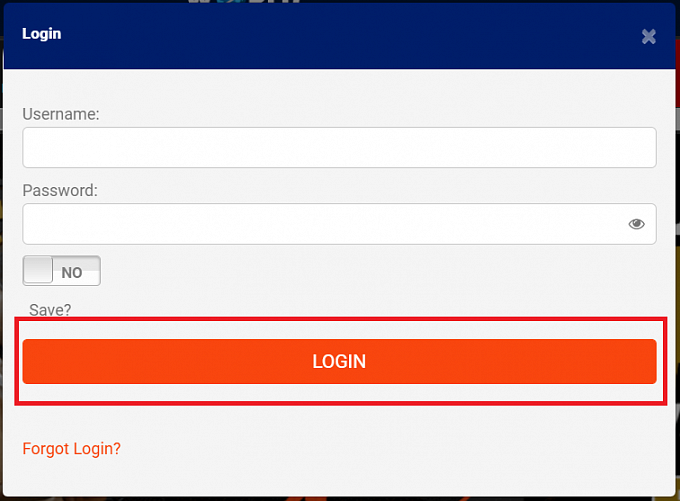Discover the Potential of Mines Stake – Maximizing Your Crypto Investments
In a landscape where traditional investment avenues face volatility, innovative financial tools such as staking have emerged as a compelling alternative. Engaging in this method allows holders of specific tokens to unlock additional stake mines revenue streams while contributing to the security and functionality of blockchain networks. It’s essential to recognize the array of benefits that comes from carefully selecting the appropriate protocol and understanding its mechanics thoroughly.
By participating in staking, individuals can often receive rewards in the form of additional tokens, creating a dynamic source of passive income. However, success in this arena is achieved through meticulous research and strategizing. Focus on criteria such as annual percentage yield (APY), lock-in periods, and underlying blockchain technology when determining which platforms align with investment goals.
Additionally, risk management should be at the forefront of any staking decision. Diversifying across multiple networks and projects mitigates exposure to potential downturns while maximizing returns. Engaging with community discussions and following trends within the crypto space can also provide valuable insights, enabling informed choices that align with shifting market conditions.
Overall, embracing this method represents more than just earning potential; it encapsulates an opportunity to contribute to emerging technologies while enhancing asset portfolios. The fusion of financial gains and technological progress makes staking a worthwhile consideration in any forward-thinking investor’s strategy.
Understanding Mining Stake Concepts for Investors
Grasping the essential principles behind mining incentives is crucial for individuals venturing into this landscape. Participants in the mining arena engage in network support, validating transactions and ensuring blockchain integrity. Several mechanisms influence profitability, making comprehension of each element vital.
One foundational aspect is the reward system. Miners are compensated with tokens for their contributions, which are governed by predetermined algorithms. Such rewards typically decline over time, establishing a supply cap that drives value appreciation. Investors should monitor these schedules closely to align their timing and purchasing strategies effectively.
Another important concept revolves around consensus algorithms. Various networks employ distinct protocols, such as Proof of Work or Proof of Stake, affecting overall energy consumption and efficiency. Understanding these protocols allows investors to evaluate potential operational hurdles and sustainability practices associated with their chosen projects.
Liquidity represents another key variable. Investors need to assess how easily they can exchange their mined tokens for traditional currency or other digital assets. Low liquidity can hinder profit realization, making it essential to identify markets with robust trading volumes.
Risk management plays a critical role in this domain. Investors should establish diversification strategies to mitigate exposure to market volatility. Engaging in multiple projects across varied sectors can smooth income streams, safeguarding against disruptions in any single asset.
Lastly, regulatory landscapes must not be overlooked. Compliance requirements may vary across jurisdictions, potentially impacting operational costs and profit margins. Staying informed about legal obligations and market developments can provide a competitive edge and bolster investment security.
What is Mines Stake and How Does it Work?
Mines Stake refers to a decentralized platform designed for users seeking to engage in asset generation through blockchain technology. This system allows participants to earn rewards by holding specific digital currencies within a secure network. By doing so, users contribute to maintaining and validating transactions across the blockchain, ensuring its integrity and security.
Operating on a proof-of-stake consensus mechanism, this framework rewards individuals based on the amount of currency held and the duration for which it is staked. Unlike traditional mining, which requires substantial computational resources, this approach is environmentally friendly and energy-efficient, promoting accessibility for a broader audience.
To initiate participation, one must first select a cryptocurrency supported by the platform. After acquiring the desired assets, users can transfer their holdings into a designated wallet that enables staking. This process often involves locking funds for a specified period, during which they contribute to network functionality. Once the staking period concludes, rewards are distributed proportionally according to the amount staked and the time maintained.
Returns vary based on market conditions and network performance, ranging from modest yields to more substantial profits over time. Investors are encouraged to research specific assets, understanding the potential risks and rewards involved. Some platforms offer additional incentives such as bonuses for long-term commitments or referrals, further enhancing earning opportunities.
Engaging actively with community forums and educational resources can provide valuable insights into strategies for effective participation. Staying informed about market trends and developing a robust investment plan can significantly influence overall performance, ensuring an informed approach to growing wealth within this innovative ecosystem.
Key Differences Between Mining and Staking
Mining involves solving complex mathematical problems to validate transactions and create new units of cryptocurrency. This process requires substantial computational power, often necessitating specialized hardware such as ASICs or GPUs. Miners compete against each other, and the first to solve the problem earns a reward, typically in the form of coins.
On the other hand, staking is a process used in proof-of-stake (PoS) networks where participants lock their assets in a wallet to support network operations like transaction validation and block creation. Validators are chosen based on the amount of cryptocurrency they hold and are willing to “stake.” This method is generally more energy-efficient, creating opportunities for greater sustainability.
Another critical difference is in the revenue generation. Miners earn rewards directly proportional to their computational contributions, while stakers receive rewards based on the amount of currency they have staked. This means that larger holders can potentially earn more passive income through staking, but it also implies a higher risk if the asset’s value decreases.
Investment risks also diverge. Mining demands ongoing capital expenditure for hardware and electricity, potentially resulting in diminishing returns when market conditions fluctuate. Staking, while lower in upfront costs, involves locking funds for a specified duration, making them illiquid and subject to potential slashing penalties if misbehavior occurs.
Overall, both avenues offer distinct advantages and challenges. Mining might appeal to those with access to cheap energy and efficient hardware, while staking could suit individuals preferring a more hands-off approach with lower operational costs. Assessing personal goals and risk tolerance is vital when choosing between these two strategies.
Strategies for Optimizing Your Investment in Mines Stake
To enhance returns, understanding market dynamics is essential. Regularly analyze trends and shifts in value, focusing on both short-term fluctuations and long-term patterns. Use technical analysis tools for precise insights, helping to time entry and exit points effectively.
Diversification within portfolios can mitigate risks. Allocate resources across various staking options to balance potential gains and losses. Consider incorporating different blockchain networks or platforms to spread exposure and reduce vulnerability to single entities.
Staying informed about project developments is crucial. Follow updates from teams behind chosen assets for news regarding upgrades, partnerships, or technology advancements. Joining community forums or social media groups can provide real-time insights that significantly influence decision-making.
Engaging in yield farming alongside staking can amplify returns. By providing liquidity to decentralized exchanges, investors can earn additional tokens, creating a compounding effect on earnings. Be cautious of impermanent loss and factor it into calculations.
Utilizing automated tools can enhance efficiency. Trading bots, for instance, can execute strategies based on predetermined parameters, improving response times and reducing manual errors. Ensure that any tools used are reputable to maintain security.
Analyzing transaction fees is also vital. Choose platforms with lower fees to maximize net gains. Regularly assess different options to ensure trading remains cost-effective, particularly when frequently moving assets.
Lastly, consider the implications of holding periods on taxation and overall strategy. Long-term holding might benefit from lower tax rates, while short-term trading can lead to higher costs. Tailor your approach according to personal financial circumstances and investment goals.
Identifying Profitable Mining Pools
Choosing the right mining pool can significantly influence returns on your digital asset holdings. A strategic approach is essential in this competitive landscape. Below are key factors to consider when evaluating options:
- Pool Size: Larger pools tend to offer more consistent payouts due to greater collective hashing power. However, the rewards are shared among more participants. Smaller pools may yield higher payouts per block found but can experience longer droughts between rewards.
- Fee Structure: Mining pools typically charge fees that range from 1% to 3%. Understanding how fees impact net earnings is crucial. Look for transparent fee policies that detail how charges are applied.
- Reward System: Different structures such as Pay-Per-Share (PPS), Proportional, or Pay-Per-Last-N-Shares (PPLNS) affect payout frequency and amount. Evaluate which model aligns with your risk appetite and cash flow needs.
- Location: Proximity to the pool’s server can impact latency and connection quality. Choosing a pool geographically closer to your mining setup can enhance performance.
- Reputation: Researching user reviews and community discussions can provide insights into a pool’s reliability and historical payment practices. Trusted sources and user testimonials matter.
- Security Measures: Ensure that the pool employs strong security protocols to protect user funds and data. Look for two-factor authentication, DDoS protection, and regular audits.
By focusing on these criteria, miners can make informed choices to find pools that not only suit their operational style but also maximize potential returns. Analyze multiple options before committing to any specific pool.
- Start with well-known pools that have established histories.
- Compare their characteristics against your personal mining goals.
- Join forums or communities for ongoing discussions about pool performances.
Perform due diligence and continuously adapt to market changes, optimizing participation in mining pools to ensure sustainable profitability.








